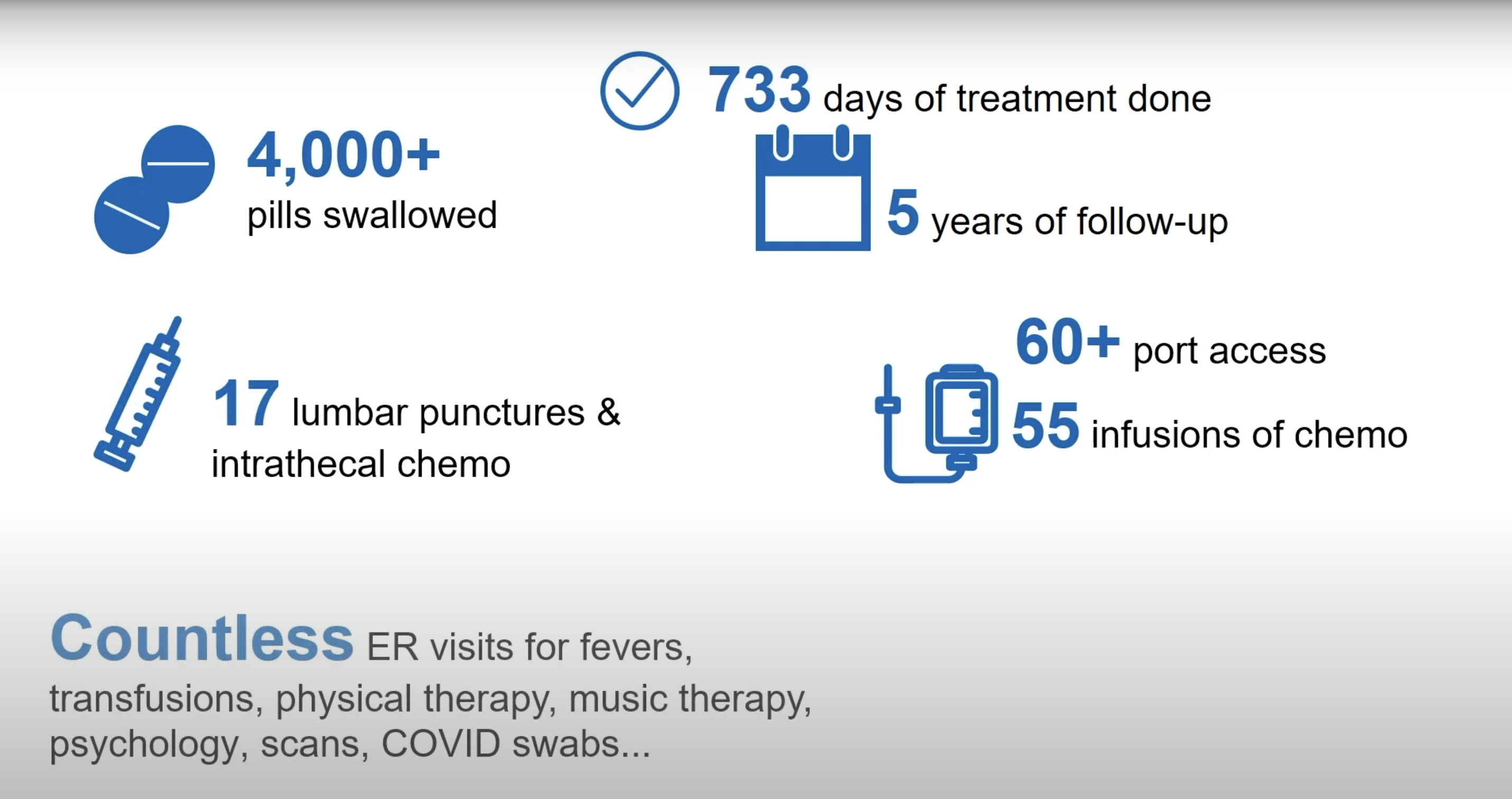Courtney Horvath, PhD, is a board certified toxicologist who knows firsthand about toxicity in pediatric oncology treatments. Her son, Colby, was diagnosed with lymphoma at the age of eight, in March 2020, and she has since become an advocate for better cancer treatments for children.
At the end of this post I have shared a TEDx Talk video by Dr. Horvath that recounts her son’s painful and arduous experience as he underwent 10 different chemotherapies as part of his two-year treatment. Dr. Horvath has summarized elements of Colby’s treatment journey in this slide.
The title of the TEDx Talk, “Surviving the Cure,” is such a perfect way of describing what Colby and other children with cancer experience that I have borrowed it here, with her permission.
Children with pediatric cancer have an alarmingly high rate of health burdens later in life. According to the National Cancer Institute, “Long-term survival into adulthood is the expectation for more than 80% of children with access to contemporary therapies for pediatric malignancies.” However, between 60 and 90 per cent of these children develop one or more chronic health conditions, and 20-80 per cent experience severe or life-threatening complications during adulthood. These are called “late effects” and can appear months or years after cancer therapy has concluded. In fact, “the prevalence of late effects increases as time from cancer diagnosis elapses.”
Someone in my extended family had bone cancer in her leg as a teenager. As an adult, she now lives with Multiple Sclerosis and last week she was admitted to hospital and will likely need a heart transplant. She is not yet 50 years old. It is heartbreaking to witness the health complications she has had in her life, although I don’t think she would appreciate being pitied. She is incredibly resilient, positive and grateful.
Pediatric cancer is severely underfunded because it is considered to be rare. Only 4 per cent of cancer funding in the U.S. is allotted to pediatric research. The figure in Canada is slightly higher at 5 per cent. This is despite the fact “Cancer is the number one disease killing children from age six months to young adulthood.” (Source: Kids Cancer Care.)
A result of this chronic underfunding is that it has stunted innovation. Dr. Horvath says that the chemotherapies used on children were developed for adults. As she states in the Commercializing Living Therapies with CCRM podcast, what Colby received was probably developed in the 1960s, “before man walked on the moon.”
Today we have less toxic options to treat, and even cure, blood cancers. But there are many reasons why a pediatric or adult patient may not receive a CAR T cell therapy, despite its success in treating these types of cancer. These include cost (i.e. reimbursement), not enough facilities qualified to treat patients, manufacturing capacity and even patient reluctance to accept a new therapy over one that has been used for years or decades. For more on this, read Erika Siren’s insightful blog, “The great experiment: CAR T in Canada.”
What can we, as a society, do to help these children? Donating to research, of course. The Horvath family, with help from their community, raised over $50,000 to award a research seed grant to Dr. Shahrzad Bahrampour of Toronto’s Hospital for Sick Children. We can also provide an inner cheek swab to a stem cell registry and donate blood for much-needed transfusions. These are simple and quick actions that could save a life.
Dr. Horvath is a compelling speaker sharing the personal story of her son’s 800 days of treatment to attack the cancer in his immune system. It’s not an easy video to watch, but the 16 minutes it takes is nothing compared to what Colby, and other children with cancer, have to endure. Watch to the end where Colby asks for two things from the scientific community.
Stacey Johnson
Latest posts by Stacey Johnson (see all)
- Right Turn: Stem cell supplements: A growing market with growing risks - December 19, 2025
- Right Turn: Beyond the ’stache: The science, the progress, the promise - November 26, 2025
- Right Turn: Can Bryan Johnson live forever? Will regenerative medicine help him do so? - October 10, 2025







Comments